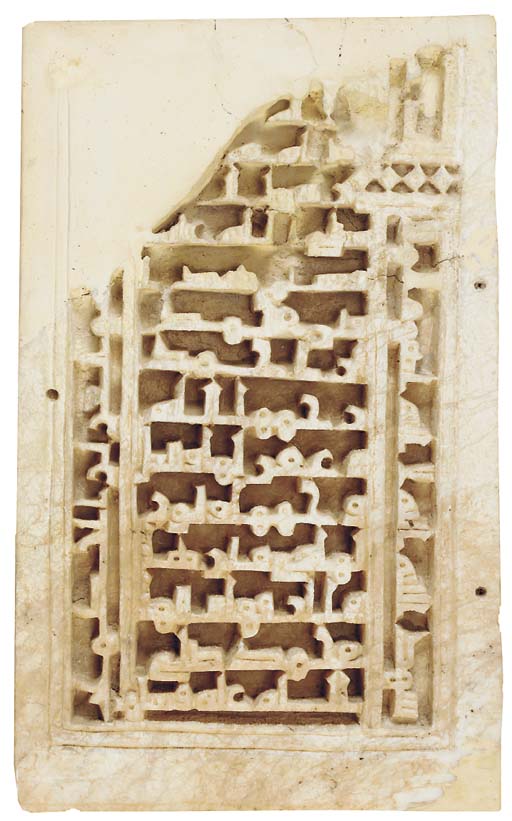

A kufic tombstone in white marble, c.10th century
Source: http://www.christies.com/LotFinder/search/LOTDETAIL.ASP?sid=&intObjectID=4272512&SE=CMWCAT03+678701+%2D721609046+&QR=M+1+0+Aqc0000900+646190++Aqc0000900+&entry=india&SU=1&RQ=True&AN=1
(downloaded Apr. 2004)
"A NISHAPUR CARVED WHITE MARBLE TOMBSTONE, NORTH EAST IRAN, OR POSSIBLY SYRIA, CIRCA 10TH CENTURY. Of rectangular form, the face deeply carved with 14ll. elegant fine kufic within an arched frame with diamond banded spandrels, a vertical band along each side of similar script, in plain border, upper left corner missing, wooden frame. 14 x 8½in. (35 x 21cm.)
Lot Notes: The inscription states that this is the tomb of Muhammad ibn Ahmad, with no date.
Two very similar panels have been published. One is now in the National Museum,
Qatar ("Art from the World of Islam", Louisiana Revy, vol.27, no.3, March 1987,
no.11, p.65); the other, more fragmentary than the present gravestone, is in
the Islamic Art Museum, Berlin (Brisch, Kalus et al.: Islamische Kunst in Berlin,
Berlin, 1962m no.212, p.64, pl.36). All three have a very similar style of kufic,
and a feathereed arch springing from pronounced diamonds where the capitals
would be. The Berlin example is attributed by Dr. Zick-Nissen to "Nishapur,
10-11th century", while that in Copenhagen by Dr David James to "Syria or Iraq,
9th-10th century"."